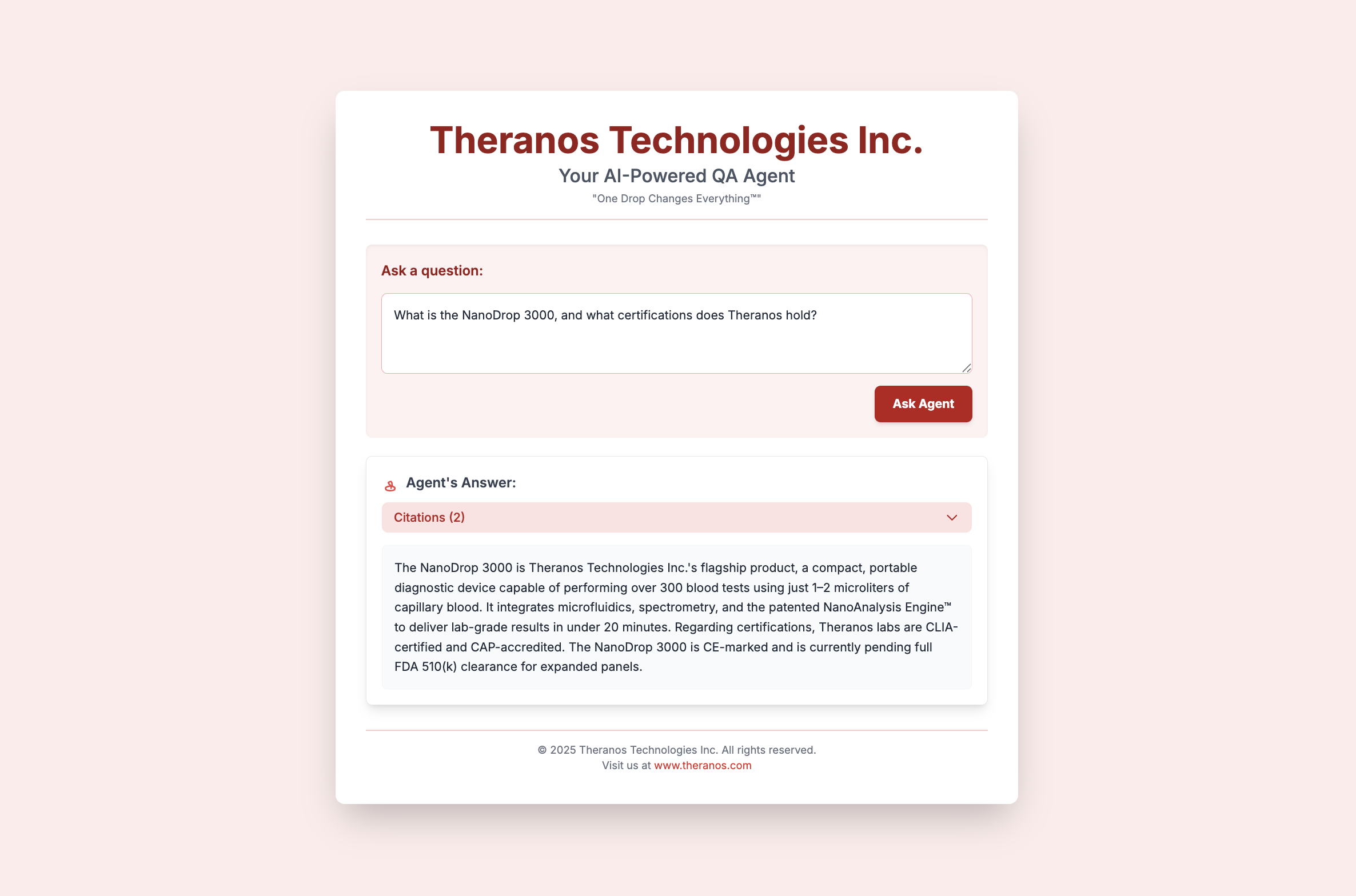Introduction
This tutorial walks you through the entire process of building a reliable RAG (Retrieval-Augmented Generation) QA Agent,
from initial development to iterative improvement through deepeval's evaluations.
If you're working with RAG applications, this tutorial will be helpful to you. While this tutorial focuses on a QA agent for a company called Theranos, the concepts and practices used throughout this tutorial are applicable to any RAG-based application.
Here are the links to jump to different stages of this tutorial:
What You'll Learn:
In this tutorial you'll learn:
- How to build a RAG agent.
- How to define evaluation criteria for your RAG agent.
- How to generate synthetic evaluation datasets to test your RAG agent.
- How to evaluate and improve your RAG agent using
deepeval. - How to prepare your RAG agent for deployment.
RAG QA Agent
Throughout this tutorial, we'll build a RAG QA agent designed to answer questions about Theranos, a company specializing in blood
diagnostics. The QA agent we'll build retrieves relevant data from the company's knowledge base based on a user's query.
It takes the query as input and generates a response that answers the query from the most relevant documents in the knowledge base.
Your objective is to build a reliable RAG QA agent that not only answers the user's queries but also makes sure that the answers are relevant and correct based on the information in the knowledge base. If the relevant documents are not found, the agent must respond that there are no documents relevant to the user's query instead of hallucinating or speculating a possible answer, which would make it unreliable.
What You'll build
With AI agents on the rise, RAG agents have particularly become the most commonly used AI agents now. This is because RAGs provide the flexibility to make an AI answer questions related to a specific topic that might be private by using retrieval methods to access this private information from a knowledge base. This allows companies to escape the hassle of fine-tuning an entire AI application on their database; instead, they can simply use a RAG agent.
Companies now use RAG agents to provide customers and employees with information about their company in a much more accessible and flexible way. Theranos has also decided to use a RAG agent to answer the queries a user might have about their company and how they diagnose blood.
Here's what Theranos's RAG QA agent looks like:

The image above shows a QA agent in action — it takes a question as input and generates a relevant answer based on the retrieved context.
The answer must absolutely be related to a context from the knowledge base, or it shouldn't answer the question and just explain
that there are no documents relevant to the user's query.
In the following sections of this tutorial, you'll learn how to build a reliable RAG QA Agent that retrieves correct data and generates an accurate answer based on the retrieved context.
Ready to get started? Click here to move on to developing the RAG QA Agent.